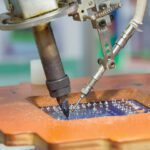Critical Design Considerations and Trends Impacting Wire and Cable
Technology advancements and material selection play an important role in the evolution of today’s innovative power, signal, hybrid, copper, and fiber optical cable designs.
The trends influencing cable design today begin with material options, extend to performance and capability, and continue to evolve as applications become more demanding. As more powerful and precise connected technologies are being developed for high-reliability environments, the cables used in these applications are key to providing reliability — even under intense environmental and operational pressure. Continually increasing speeds, shrinking size and weight requirements, flexibility and bend radius considerations, harsh operating conditions, and demanding installation requirements all influence the cable decisions designers need to make. Increasingly, fiber optic cabling is becoming part of the mix for more markets and applications. Multi-functional cable options and solutions that operate in concert with other interconnects help streamline today’s complex wiring architectures.

Stringent Cable Requirements for New Medical Applications
Medical applications have specific needs that address safety as well as performance. Components used in medical devices and equipment must deliver high reliability and exceptional performance, but their challenging use conditions make ruggedness another top consideration. Demand continues to grow for cables with material properties that prevent the spread of infection and hold up to extensive cleaning and disinfecting.
Northwire, a manufacturer of wire and multi-conductor cable and a LEMO group company, produces BioCompatic, a USP Class VI silicone alternative. BioCompatic cable materials do not contain phthalates, halogens, or latex, and meet ISO 10993-5 cytotoxicity and ISO 10993-10 irritation and skin sensitization requirements. The material is resistant to chemicals, cuts, abrasion, and crushing, and is compatible with steam, H202, gamma and EtO sterilization methods. When integrated with LEMO’s REDEL SP connectors, it offers a robust medical cable assembly solution for handheld surgical devices, dental equipment, cosmetic surgery, laparoscopic surgery, and hearing diagnostics.
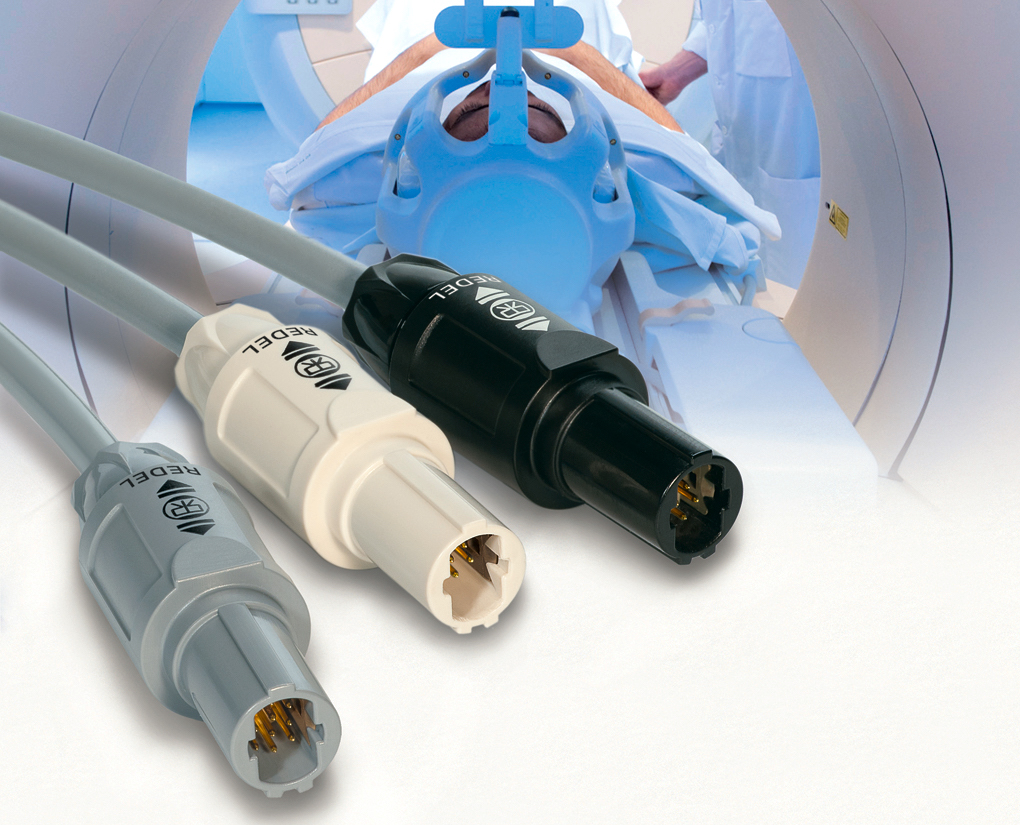
LEMO’s REDEL SP connector features a latch sleeve that is recessed into the connector housing to ensure greater shock resistance. SP connectors use high contact density configurations with solder, crimp, and printed contact options. This connector design offers high reliability for monitoring and critical care applications
Antibacterial and antimicrobial cable assemblies play a significant role in medical device applications. Silver ions are known for their effectiveness against a range of microorganisms and their use in the medical environment has become common. Axon’ Cable Nosofree antibacterial cable assemblies use silver ion micro-flux technology to inhibit the growth of microbes. Axon’ cable and cable assemblies meet medical market requirements for biocompatibility, sterilization, flexibility, and miniaturization. Axon’ medical cable assemblies can be insulated with thermoplastic polymers such as PVC, TPU, TPE, and other plastics. Cable jacket materials are selected based on biocompatibility requirements and the method of cleaning, disinfecting, and sterilization needed for the application.
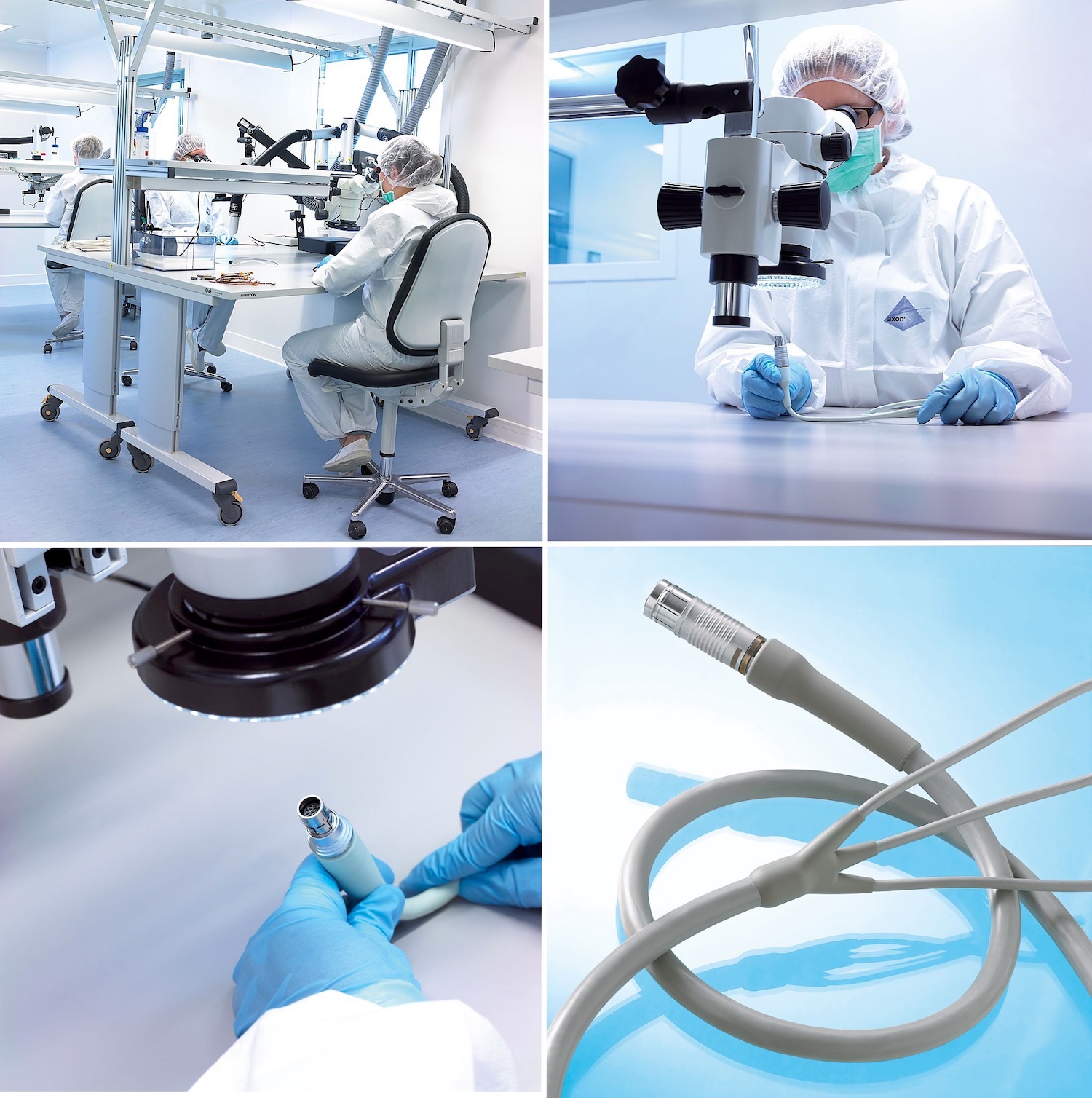
Axon’ Cable uses liquid silicone rubber (LSR) and other durable thermoplastics to manufacture assemblies designed to withstand autoclave sterilization.
A new coating technology, Specialty Coating Systems (SCS) microRESIST antimicrobial parylene technology, eliminates microorganisms on cables and specialty coated devices. This technology combines the benefits of biocompatible arylene with antimicrobial properties. SCS Parylene coating is an ultra-thin film that is used to coat silicone and TPE cable jackets. It has USP Class Vi polymer certification and is biocompatible for medical device and cables, including stents, cardiac assist devices, electrosurgery, cochlear implants, catheters, and many other applications.
SENSOCAB, the in-house cable manufacturing entity of NICOLAY GmbH, a manufacturer of connectors, cable, cable assemblies, and sensors designed for medical devices, manufactures tinsel wire, silver- or tin-plated copper ribbon wires laminated and wrapped around a Kevlar or nylon textile strengthening thread. Tinsel wire is typically crimped through the insulation to make contact with the metal ribbons, rather than stripping insulation, because ribbons are relatively fragile and the core can be damaged by high temperatures, which makes it impractical to terminate tinsel wire by soldering. SENSOCAB’s Tinsel wire is normally encapsulated within an extruded polyurethane jacket that is flexible, durable, and exhibits minimal torsion rotation memory. Another tinsel wire maker, Maeden, wraps strands of thin copper foil around a textile core and applies a special anti-oxidation treatment to extend its environmental performance.
Hybrid Cabling and Encapsulation for Medical Applications
The rising amount of data and high-speed transmission requires interference-proof, fixed and flexible cables that must be extremely reliable, durable, manageable and biocompatible under mechanical loads in extremely sensitive environments. System engineering for assemblies and harnesses in the early development stage helps pinpoint interference factors from the surrounding application and identifies critical points within the cable system that need strengthening or protection. This process should include application analysis, cable routing, and a careful evaluation of every element in the connected system. Cooperation between cable suppliers and product designers in the development phase of a medical device helps to define the proper medical cable design and specification.
LEONI’s custom medical cables meet dynamic and hygienic requirements through application-specific constructions, reliable assembly, and the use of special materials. The company offers single cables up to complex assemblies or harnesses and fully cabled modules.
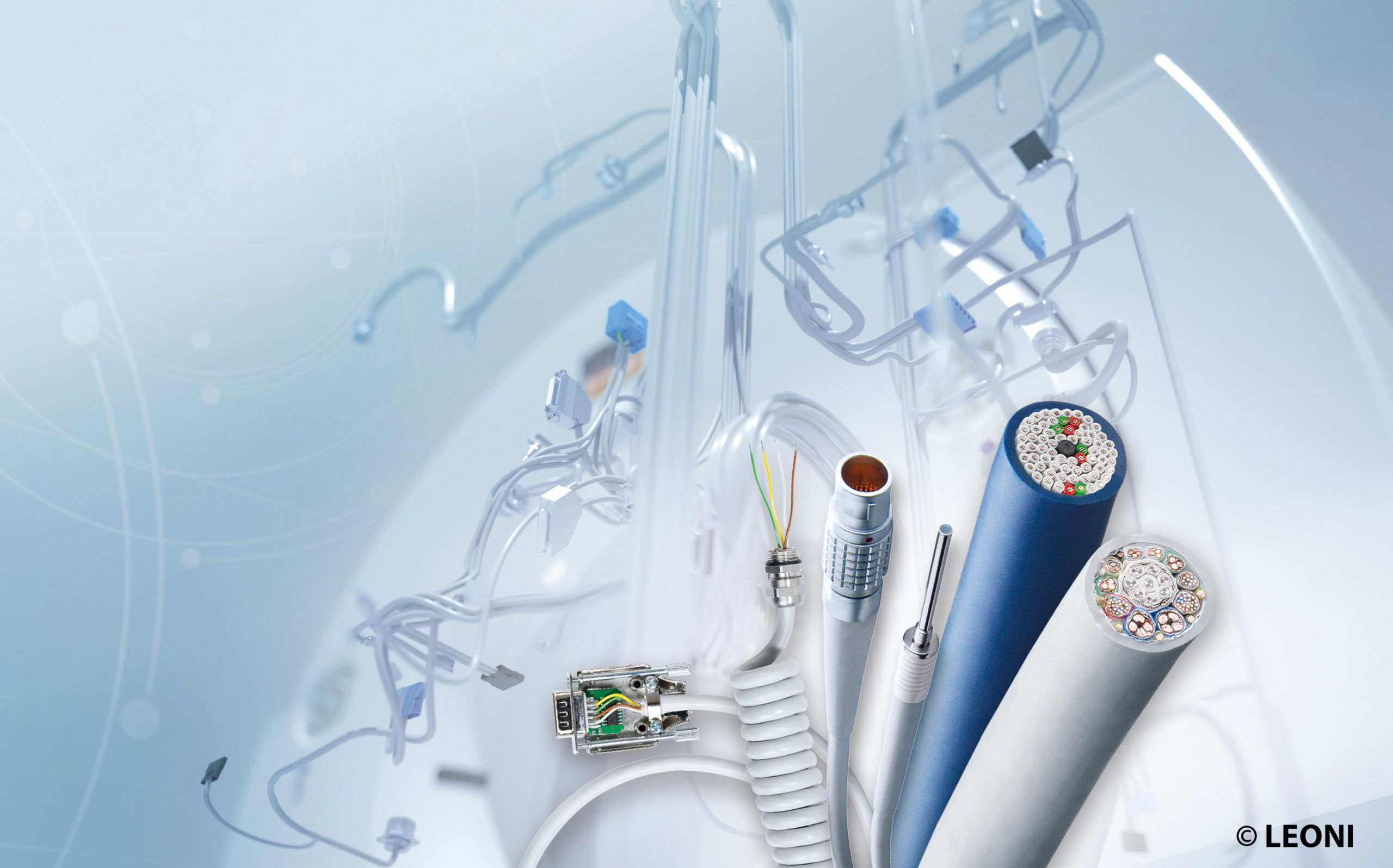
LEONI cable products, available through Arrow Electronics and other distributors, include standard and custom cables and assemblies, as well as complex harnesses and subsystem assembly for medical devices.
Siemen-Jannes Meinders, head of the Leoni Healthcare business unit, said, “When designing medical cable assemblies, we ensure that cable jacket and encapsulation materials are selected to optimize product performance. We offer unique custom hybrid cables that combine signal, power, data, light or media transmission in extruded cable jackets designed to withstand thousands of flex and/or autoclave cycles up to 290° F. To achieve the most reliable assembly design in flexing or hygienic medical applications, we utilize high-pressure and low-pressure injection-molding using different thermoplastic and elastomeric plastics, including biocompatible materials.”
Over-molding technologies can further optimize functionality, protect connectors and otherwise vulnerable electronic components in order to withstand extreme temperatures, multiple flexure and harsh environments, including stringent cleaning, disinfection, and sterilization requirements.
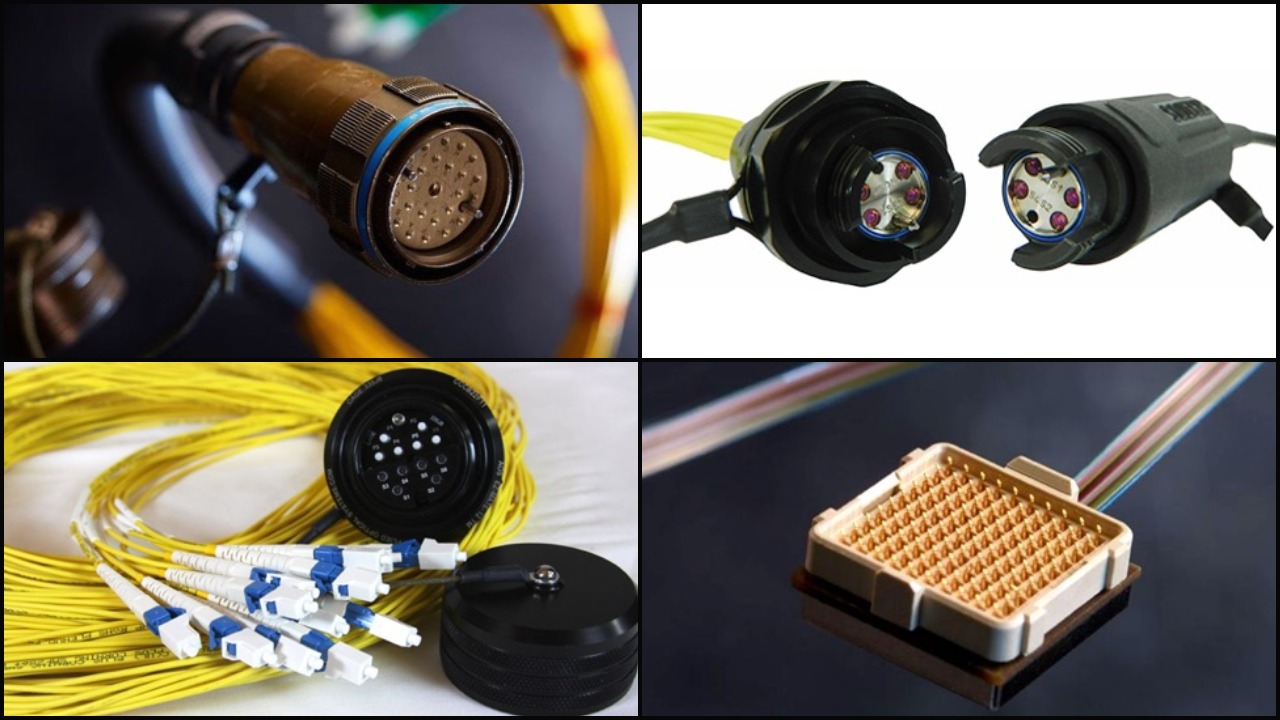
Timbercon designs custom fiber optic and hybrid cable assemblies and harnesses of all kinds, from basic breakouts and overmolds to harsh environment harnesses and deployable solutions.
Sophisticated medical devices rely on high bandwidth, EMI resistance, reduced ferro-magnetic content and significantly lower weight. Timbercon, a Radiall company, offers expanded beam fiber optic interconnect cabling solutions that can replace copper wiring, as well as customizable fiber optic light pipes, high-power laser assemblies, equipment interconnects, probes, and scopes.
Harsh-Environment Applications
Aerospace, military, medical, and some industrial markets require cable and connectors that perform well in tight routing and bending installations, with temperature extremes, or in high shock and high G-force environments.
One manufacturer that fills this need is Carlisle Interconnect Technologies (Carlisle IT). Carlisle IT’s LITEflight fiber optic cable provides maximum performance and durability in a variety of harsh environments.
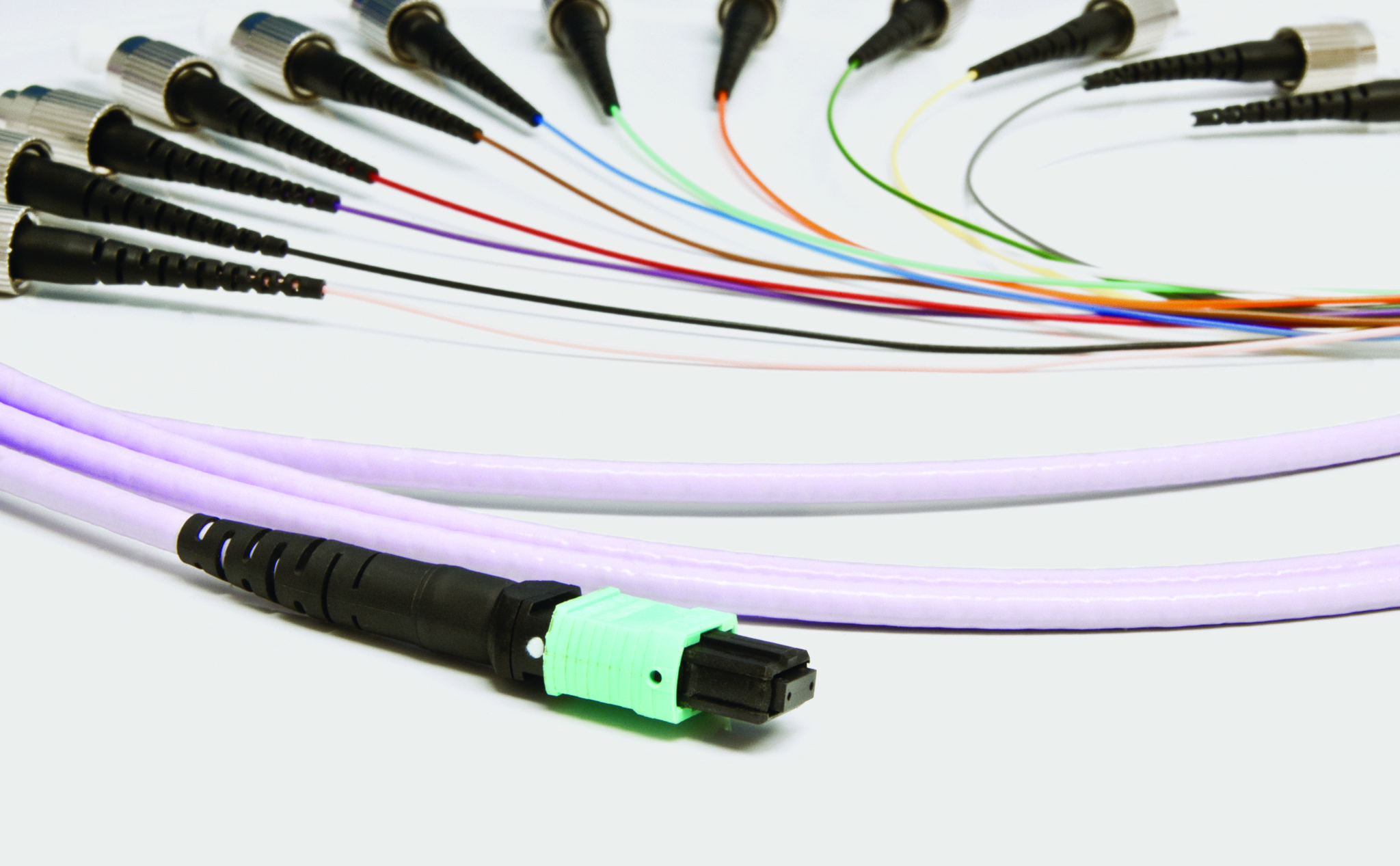
CarlisleIT’s LITEflight fiber optic cable is specifically designed to provide maximum performance and durability in the demanding conditions found in aerospace, military, industrial, and other harsh environments.
Draka, a brand of the Prysmian Group, provides single-mode fiber optic cables that offer significantly lower loss of attenuation even when tightly installed in space-constrained flooring, window and door strips, racks, and other environments where considerable bending is an installation constraint. Draka’s G.657.A1 fiber attenuation loss is only 0.2dB when turned twice around a pencil, which is light-years ahead of the 11dB losses of its predecessor. This new fiber technology expands signal transmission capacity and network infrastructures in support of 5G, IoT, and AI high speed and lower latency requirements.
Sustainability and Cabling Selection
Amid growing concerns of climate change, the United States is rejoining the Paris Climate Accord (PCA), a legally binding international treaty on climate change. The PCA was adopted by 196 parties with a stated goal to limit global warming to well below 2° C, preferably to 1.5° C, compared to pre-industrial levels. To achieve this long-term temperature goal, countries aim to reduce global greenhouse gas and carbon emissions by 2035, or sooner.
The Paris Agreement emphasizes climate-related capacity-building for all developed and developing countries and requests the former support the latter. As a result, most countries are emphasizing zero-carbon emission solutions with emphasis on the power and transportation sectors, creating new business opportunities for early enablers. This will likely mean development of power infrastructure grids and cabling at an accelerated rate to deliver renewable energy to large cities over the next 10 to 20 years.
NKT, along with six other design partners, is developing the world’s longest superconductor power cable prototype. The SuperLink project is expected to be 12 kilometers in length, with a power rating of 500 MW, voltage level of 110 kV, and is intended to provide clean renewable energy within an area in the heart of Munich. The SuperLink will be installed using existing infrastructure to minimize construction disruptions. The cable will be cooled to -200ºC in closed circuit with environmentally friendly nitrogen refrigeration.

The SuperLink project will run a superconductor high-voltage cable line from Menzing to the load center in the south of Munich in the world’s first superconductor cable line of such dimensions with a real supply mandate.
Other environmental trends impacting cable include safe and sustainable material considerations. As the components industry continues to minimize the impact of hazardous materials in the production of electronic components, some legacy materials and products are being phased out. Designers must plan ahead to specify products that will be sustainable and available in the long-term.
According to Mark Vanderwoude, founder of Cutting-Edge Cable Solutions, “Some manufacturers are experiencing an uptick in discontinuations of jacket compounds from raw material sub-suppliers, often without a last-time buy. We anticipate more consolidation and elimination of compounds that conflict with REACH and RoHS regulations, or demand declines as compounds exceed legacy product lifecycles. As a result, manufacturers and customers will be challenged to find alternative materials, and face costly, time and resource-consuming revalidations. This forces customers to be more demanding of material transparency and insistent upon qualifying at least two suppliers to protect their supply chain. Suppliers that can deliver unique solutions in-house offer a compelling value proposition to the market.”
In summary, material selection plays an ever-increasing role in critical cabling design decisions.



